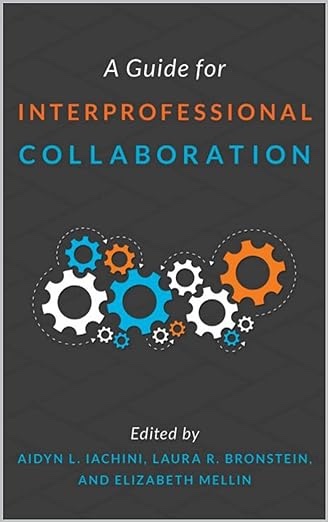
A Guide for Interprofessional Collaboration Edited by Aidyn Iachini, Laura Bronstein, and Elizabeth Mellin would make a great textbook for any course on social work, which is a course that anyone who cares for individuals, families, or communities should take. The complex needs people face cannot be served by any one profession, which is why collaboration is essential. This book also belongs in any well-stocked professional development library.
Part I: Foundations
1. Relevant Contexts for Interprofessional Collaboration in the 21st Century: Social Issues, Settings, and policies
- Social work comes with many complex challenges. Addressing them cannot usually be achieved by social workers alone. Therefore, the social work profession is increasingly emphasizing interprofessional collaboration. Other professionals included are psychologists, counselors, doctors, educators, nurses, pharmacists, child welfare workers, and law enforcement among others. Bringing teams together often falls on the social worker. Collaboration is challenging, which is why many universities are now offering courses in interprofessional collaboration.
2. Exploring Definitions and Models of Interprofessional Collaboration
- There is a spectrum that extends from cooperation to coordination to collaboration. It goes from increasing levels of interdependance, structure, commitment, and risk. At the highest collaboration level services are co-located with multiple professions contributing to treatment.
- A second continuum goes from interprofessional to interdisciplinary. Multidisciplinary collaboration happens when professionals with similar backgrounds engage in mutual work. Mental health assessments are often multidisciplinary. Interdisciplinary collaboration occurs when boundaries between knowledge and expertise are blurred. Transdisciplinary collaboration occurs when boundaries are crossed, knowledge is exchanged and transformed into something new.
- The remainder of the chapter summarizes models that deal with the inputs, processes, and outputs of services.
3. A Model for Interprofessional Collaboration (MIC)
- The model used for the rest of the book is Bronstein’s Model for Interprofessional Collaboration (MIC). It contains five constructs. Interdependence involves people relying on each other to reach agreed upon goals. Everyone needs to understand everyone’s role and area of expertise. Newly Created Professional Activities are those that occur unexpectedly and are often thought of as synergy. Flexibility is necessary when rolls are blurred. Collective Ownership of Goals should involve everyone participating in goal setting, implementation, and evaluation. Reflection Process should take place thoughtfully and regularly.
- Beyond the five constraints, there are four things that influence the process. 1.Professional Role: Everyone needs to articulate their expertise and contributions. This will help avoid turf wars. 2. Structural characteristics deal with having time, space, and administrative support for collaboration. 3. Personal characteristics are important as collaborators need to like and trust each other. 4. History of Collaboration: Having a history of positive collaboration is important. This is why it needs to be a focus of classroom work and internships.





